Little did Philetus Norris know that when he picked up Native American artifacts and sent them off to the Smithsonian Institution in the latter half of the 19th century, that he launched what would eventually be a complex and dynamic field of inquiry into the archeology of the world’s first national park. Learn more about the archeological history of Yellowstone.
-
Yellowstone National Park
Article 1: The Yellowstone Story

Little did Philetus Norris know that when he picked up Native American artifacts and sent them off to the Smithsonian Institution in the latter half of the 19th century, that he launched what would eventually be a complex and dynamic field of inquiry into the archeology of the world’s first national park. For Yellowstone National Park (YNP), archeology provides a compelling counter narrative to the idea that Yellowstone is a wilderness, untouched by humans... Read more
-
Yellowstone National Park
Article 2: A Brief History of Archeology at Yellowstone National Park
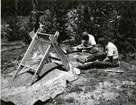
The fact that Native Americans used the landscape of present-day Yellowstone National Park (YNP) for millennia was evident to the early European-American trappers, prospectors, and explorers, who encountered native peoples during their travels and noted ancient trails and chipped stone artifacts. Read more
-
Yellowstone National Park
Article 3: Obsidian: The MVP of Yellowstone's "Stones"
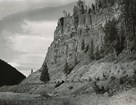
Obsidian is a volcanic glass formed when magma is extruded from the earth’s crust and cools very rapidly, with little moisture content or crystalline inclusions. It was generally the most popular tool stone material used by the ancestors of Native Americans in the Greater Yellowstone Ecosystem (GYE) and was prized as a tool stone material for practical (and potentially cultural) reasons. Read more
-
Yellowstone National Park
Article 4: Historical Archeology

Public perceptions of archeological sites in the Northern Rocky Mountains are heavily geared towards prehistoric sites, such as lithic scatters, quarries, tipi rings, and bison jumps. Although these types of archeological sites are important in that they reflect the majority of human occupation in the area, there is much to be learned from the more recent past, also known as the historical period. What exactly is historical archeology and why is it important? Read more
-
Yellowstone National Park
Article 5: Debunking the Myth, America's Eden

Excerpt from “Engineering Eden” by Jordan Fisher Smith To early Euro-American visitors, in comparison to New England, Yellowstone certainly looked like a wilderness. But it had been under some kind of human influence for thousands of years before it became a nature-management kindergarten for an otherwise highly advanced civilization that had by then laid a telegraph cable across the bottom of the Atlantic between Ireland and Nova Scotia... Read more
-
Yellowstone National Park
Article 6: Dendrochronology - The Study of Tree Rings
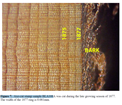
The science of dendrochronology can be used to estimate when a tree was felled or naturally died, if the calendar year dates of tree growth rings can be determined. Read more
-
Yellowstone National Park
Article 7: Archeology Along the Nez Perce National Historic Trail

When Yellowstone National Park (YNP) was created in 1872, much of the western Great Plains and Rocky Mountains remained uncharted wilderness still dominated by various Native American tribal groups, some of which were fighting for their own survival. Read more
-
Yellowstone National Park
Article 8: Archeology Facts

The Heritage & Research Center in Gardiner holds 611,196 cultural and natural history objects, as of October 2017. Learn more... Read more
-
Yellowstone National Park
Article 9: Archeology & Adaptation to Climate Change in Yellowstone
The effects of climate change may pose the greatest threat to the integrity of natural and cultural resources that Yellowstone National Park (YNP) has ever experienced (NPS 2010). Protection and preservation of these resources requires park managers to understand potential threats using the best available research, and that they act in the long-term public interest. Read more
-
Yellowstone National Park
Article 10: Debunking the Myth, Seasonal Use of Yellowstone

Historically there have been narratives that Yellowstone was either sparsely occupied by Native American groups or never inhabited by them at all. These accounts are at odds with both the wealth of prehistoric archeological sites in the park, and ethnographic accounts and oral traditions of the park’s 26 associated tribes. Read more
-
Yellowstone National Park
Article 11: Archeological Significance of Yellowstone Lake
Yellowstone Lake is considered by many to be the heart of Yellowstone National Park. As North America’s largest, high-elevation natural lake at nearly 8,000 ft. (2,400 m) above sea level, this 20 mile long by 15 mile (32 x 24 km) wide freshwater body of water has played an important role in the lifeways of Great Plains, Great Basin, and Rocky Mountain Native Americans for 11,000 years. Read more
-
Yellowstone National Park
Article 12: Debunking the Myth, Fear of Yellowstone
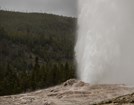
One of the persistent myths about Native American attitudes regarding Yellowstone is that they were afraid of this place and avoided it. The stories passed to us by early Anglo explorers and park administrators report that the geysers, fumaroles, and other thermal features frightened the native peoples. Read more
-
Yellowstone National Park
Article 13: A Volunteer's Impressions
My introduction to the field of archeology was fortuitous for me and came late in my life. The field of archeology was essentially unknown to me when I applied to become a volunteer for the National Park Service (NPS). I had applied to increase my knowledge of NPS operations in order to become an advocate for the park system in my retirement. Read more
-
Yellowstone National Park
Article 14: Shorts (YS 26-1)

Learn more about ongoing research and findings in this reoccurring series of short articles. Read more
-
Yellowstone National Park
Article 15: A Look Back, Howard Eaton's Yellowstone Tour

Howard Eaton was one of Yellowstone National Park’s (YNP) most famous and beloved concessioners who introduced hundreds of tourists to the wonders of Yellowstone between 1883 and 1921, and whose saddle-horse tours contributed to Yellowstone’s popularity during the park’s formative years. In 1923, one year after Eaton’s death, the National Park Service (NPS) named a newly-completed, 157-mile bridle and hiking trail for him... Read more
-
Yellowstone National Park
Article 16: A Look Back, Botanical Adventures in Yellowstone, 1899
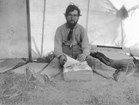
On June 24, 1899, a sentry on routine patrol discovered a party of six camped on the Madison River just inside Yellowstone National Park (YNP). Inspection revealed multiple infractions... Read more
-
Yellowstone National Park
Article 17: A Look Back, Historic Relief Model Helped the Public Understand the Human Relationship to Yellowstone Geology
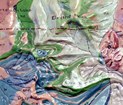
In the Yellowstone Justice Center in Mammoth, Wyoming, is a historic 1897 geologic relief model of Yellowstone National Park and the Absaroka Range by Edwin E. Howell. At 7 ft. square, it’s a stunning scientific sculpture of a beloved geologic region in the U.S. (figure 1). It was donated to the park in 1921 and was installed in the old Information Center in Mammoth... Read more
-
Yellowstone National Park
Article 18: A Day in the Field, Collaboration is Key to Upper Gibbon Fishery Restoration

In September 2017, a collection of 35 biologists and ecologists, interns, and park volunteers from several parks, agencies, and non-governmental organizations (NGOs) gathered at a series of lakes in the upper Gibbon watershed of Yellowstone National Park (YNP). The task at hand was to implement an ambitious project. The project area included 16 km (10 mi) of the Upper Gibbon River and Grebe, Ice, and Wolf lakes, totaling over 92 ha (228 surface acres)... Read more
-
Yellowstone National Park
Article 19: News and Notes (YS-26-1)

Yellowstone Science shares information from scientists and researchers with the public to highlight in-depth, science-based knowledge about the Greater Yellowstone Ecosystem. The production of Yellowstone Science is made possible, in part by a generous grant to the Yellowstone Park Foundation by Canon U.S.A. Read more
-
Yellowstone National Park
Article 20: Sneak Peek (YS-26-1)

In medicine, vital signs, such as blood pressure and pulse rate, are simple routine measurements used to assess human health. When tracked over time, vital sign measurements contribute to diagnoses and support decisions concerning the response of patients to medical treatments. Slight abnormalities in vital sign measurements (e.g., elevated body temperature) are usually not critical but may warrant a more careful diagnosis, whereas extremely abnormal vital signs... Read more



